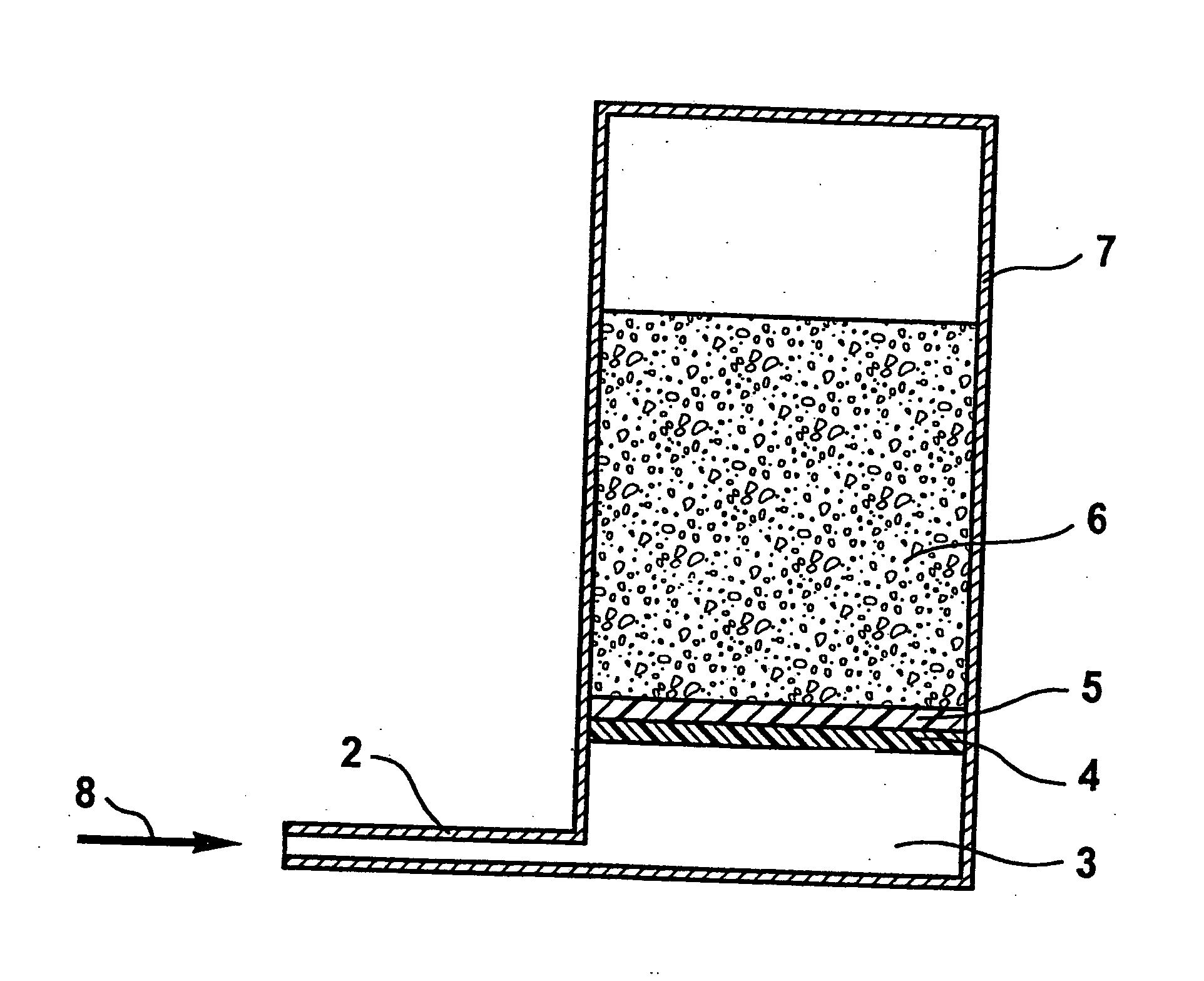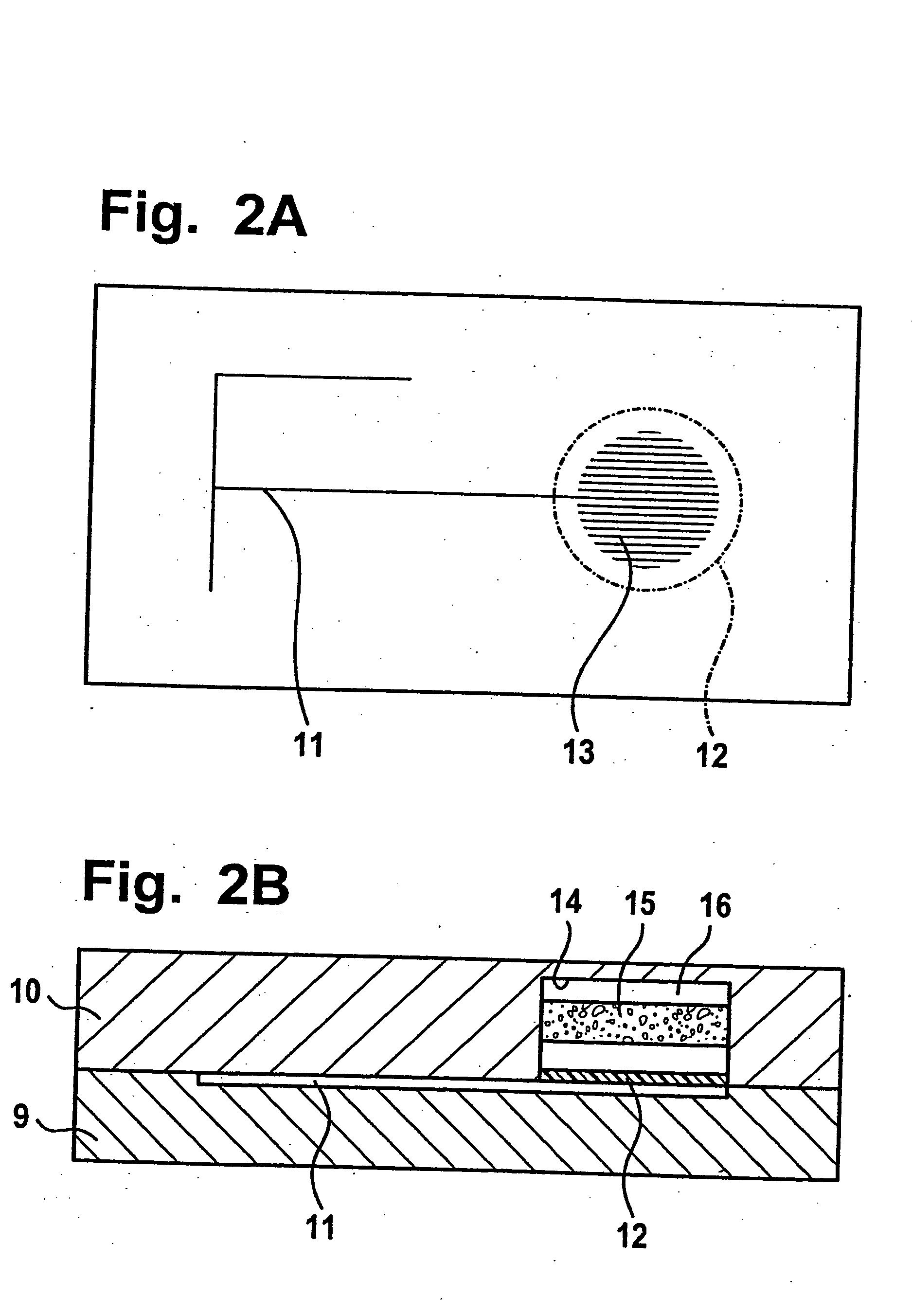Pump for low flow rates
- Summary
- Abstract
- Description
- Claims
- Application Information
AI Technical Summary
Benefits of technology
Problems solved by technology
Method used
Image
Examples
Embodiment Construction
[0038]FIG. 1 shows a cross-section through a pump according to a first embodiment. The arrangement shown has a channel (2) having a diameter of 100 μm in which a transport liquid is located. Water was chosen as the transport liquid in the case shown. The channel is closed with a wettable membrane (4) in a region of the transport channel with an enlarged cross-section. In the present case a BTS 65 from the Memtec Company (now: USF Filtration and Separations Group, San Diego, Calif., USA) (PESu hydrophilized with hydroxypropyl cellulose) was used as the membrane. This very hydrophilic membrane is asymmetric and has pores in the range from about 10 μm on one side and 0.1 μm on the other side. The side with the larger pores faces the liquid. A non-wettable membrane made of expanded PTFE is located above the wettable membrane (4). The non-wettable membrane is mounted on the wettable membrane in such a manner that it completely covers the side of the wettable membrane (4) which faces away...
PUM
 Login to View More
Login to View More Abstract
Description
Claims
Application Information
 Login to View More
Login to View More - R&D
- Intellectual Property
- Life Sciences
- Materials
- Tech Scout
- Unparalleled Data Quality
- Higher Quality Content
- 60% Fewer Hallucinations
Browse by: Latest US Patents, China's latest patents, Technical Efficacy Thesaurus, Application Domain, Technology Topic, Popular Technical Reports.
© 2025 PatSnap. All rights reserved.Legal|Privacy policy|Modern Slavery Act Transparency Statement|Sitemap|About US| Contact US: help@patsnap.com



